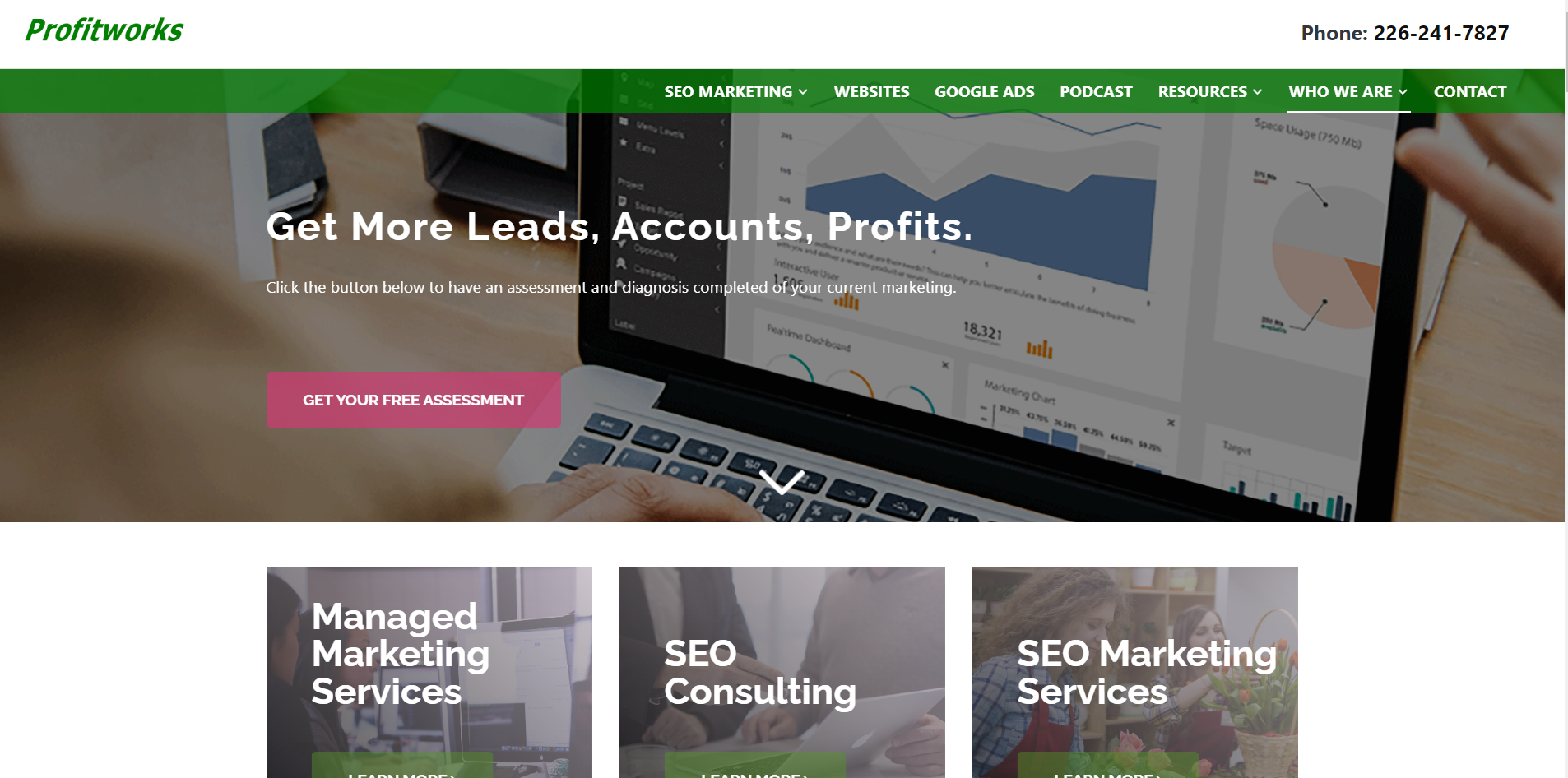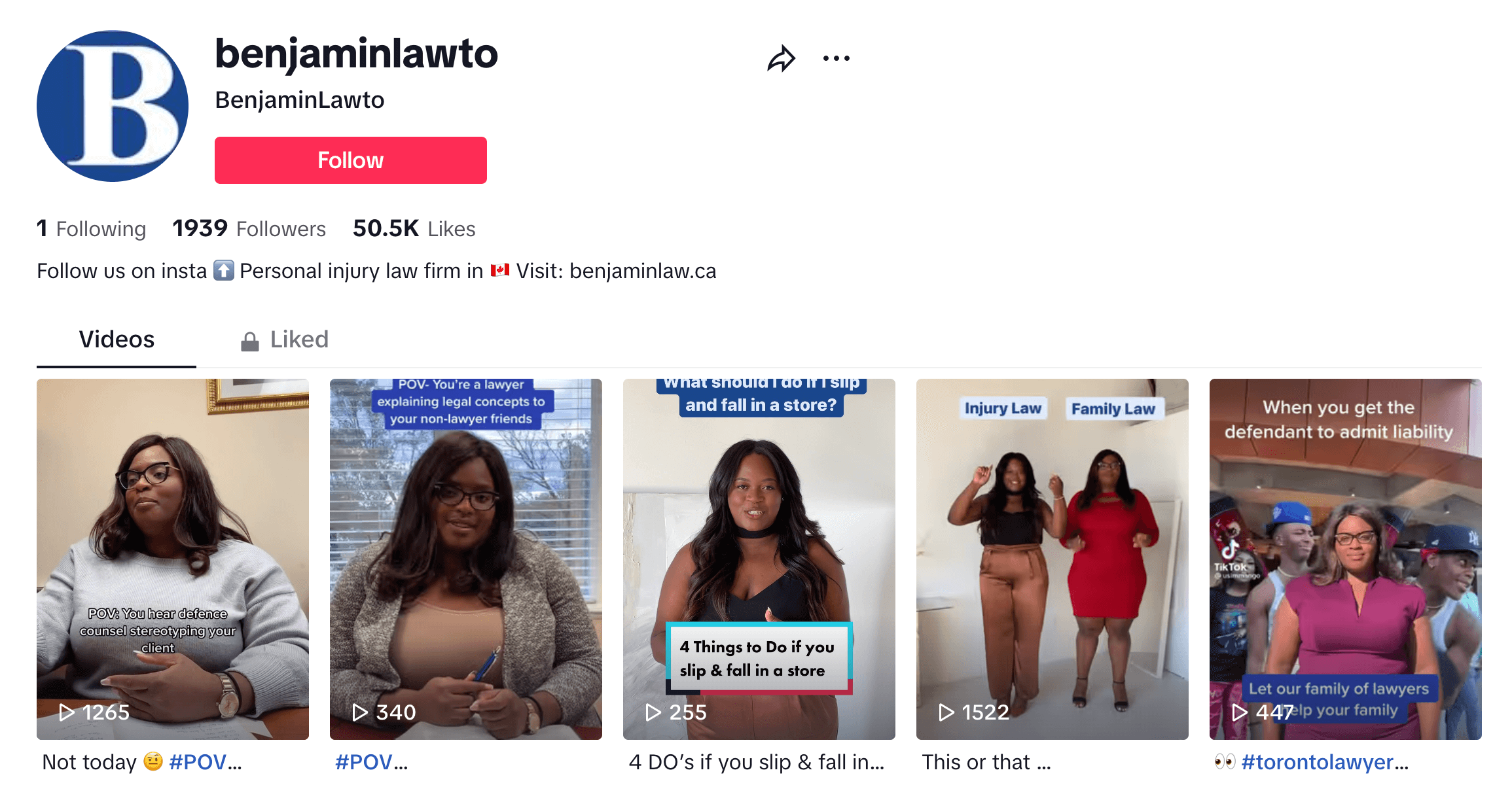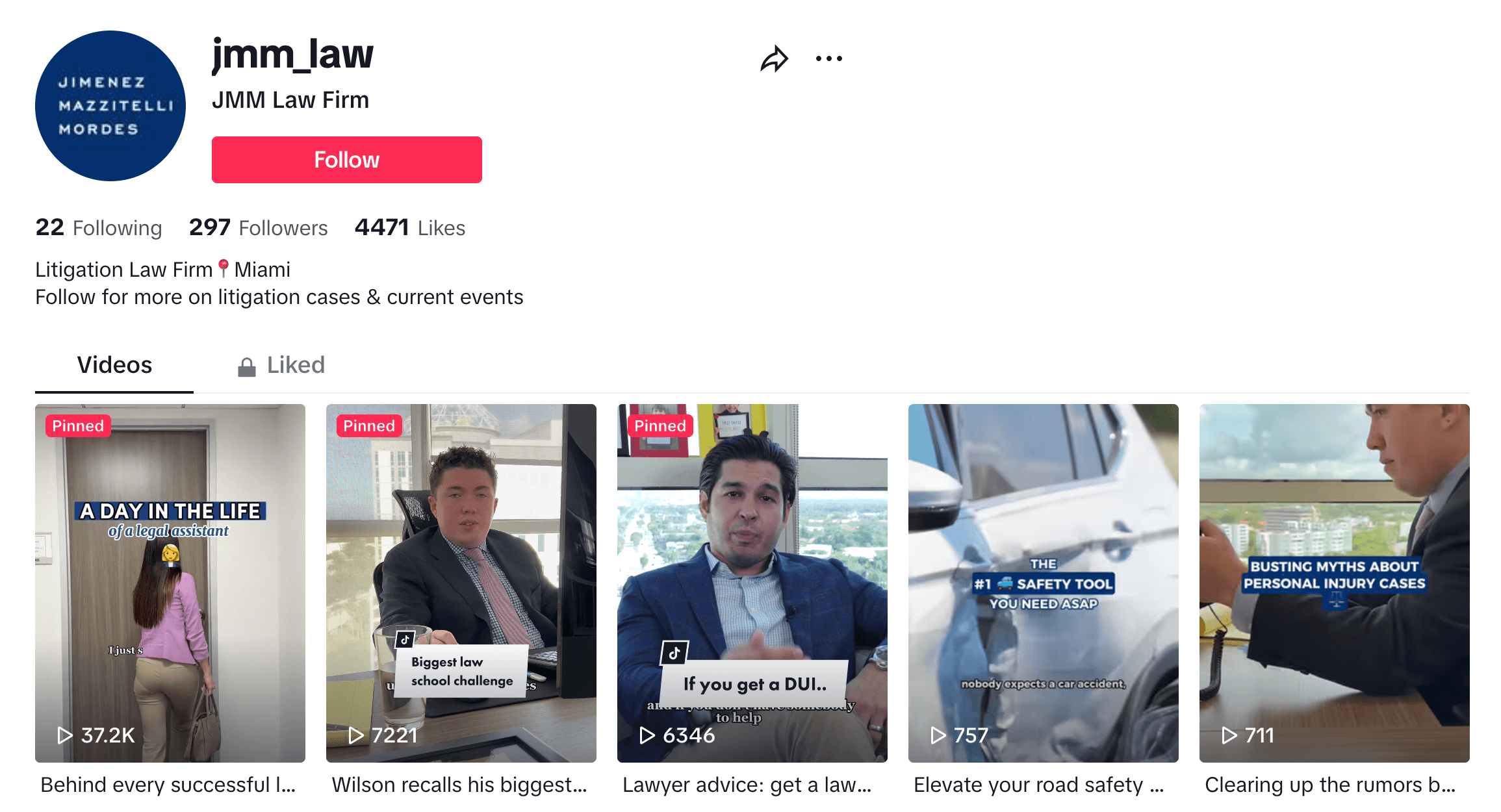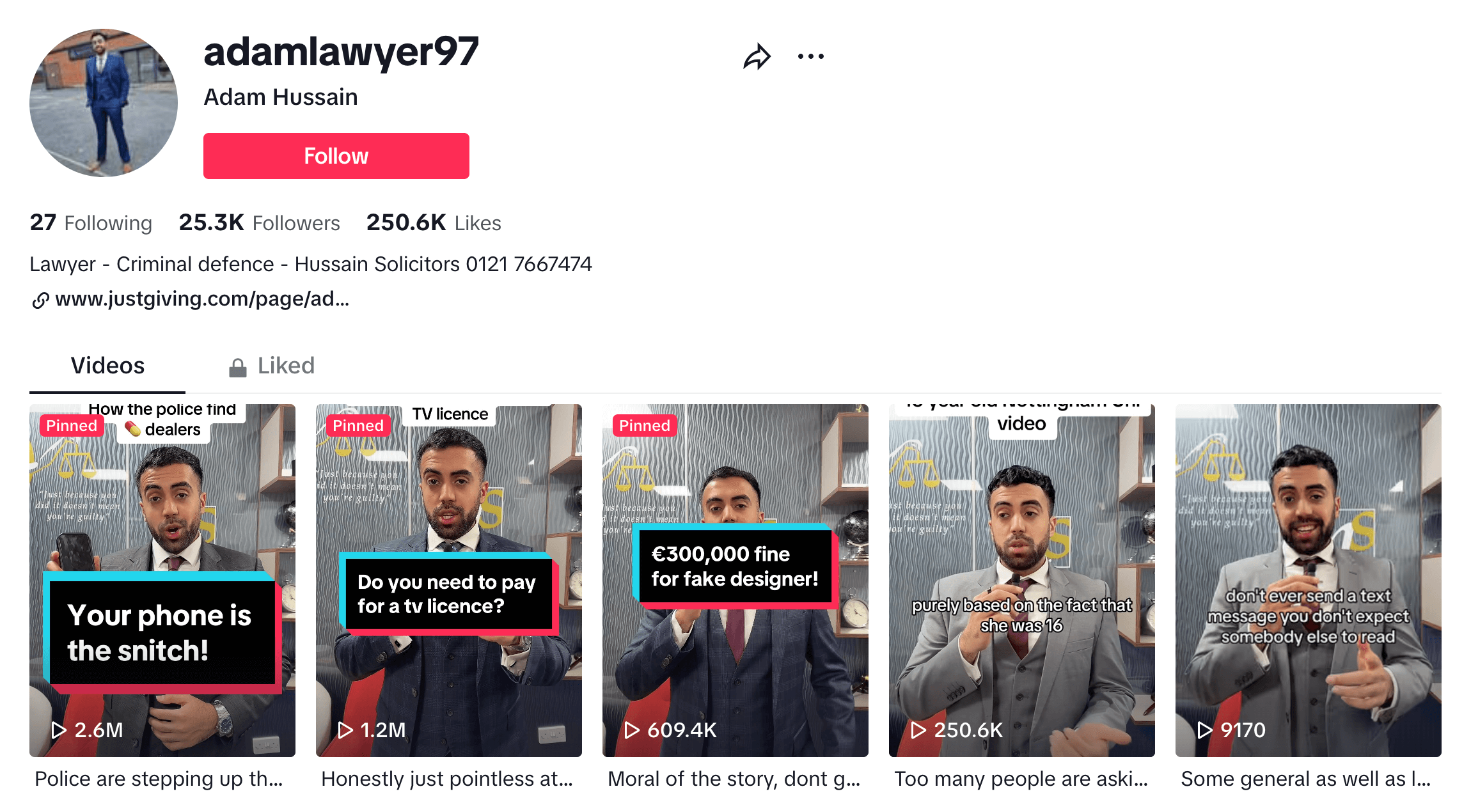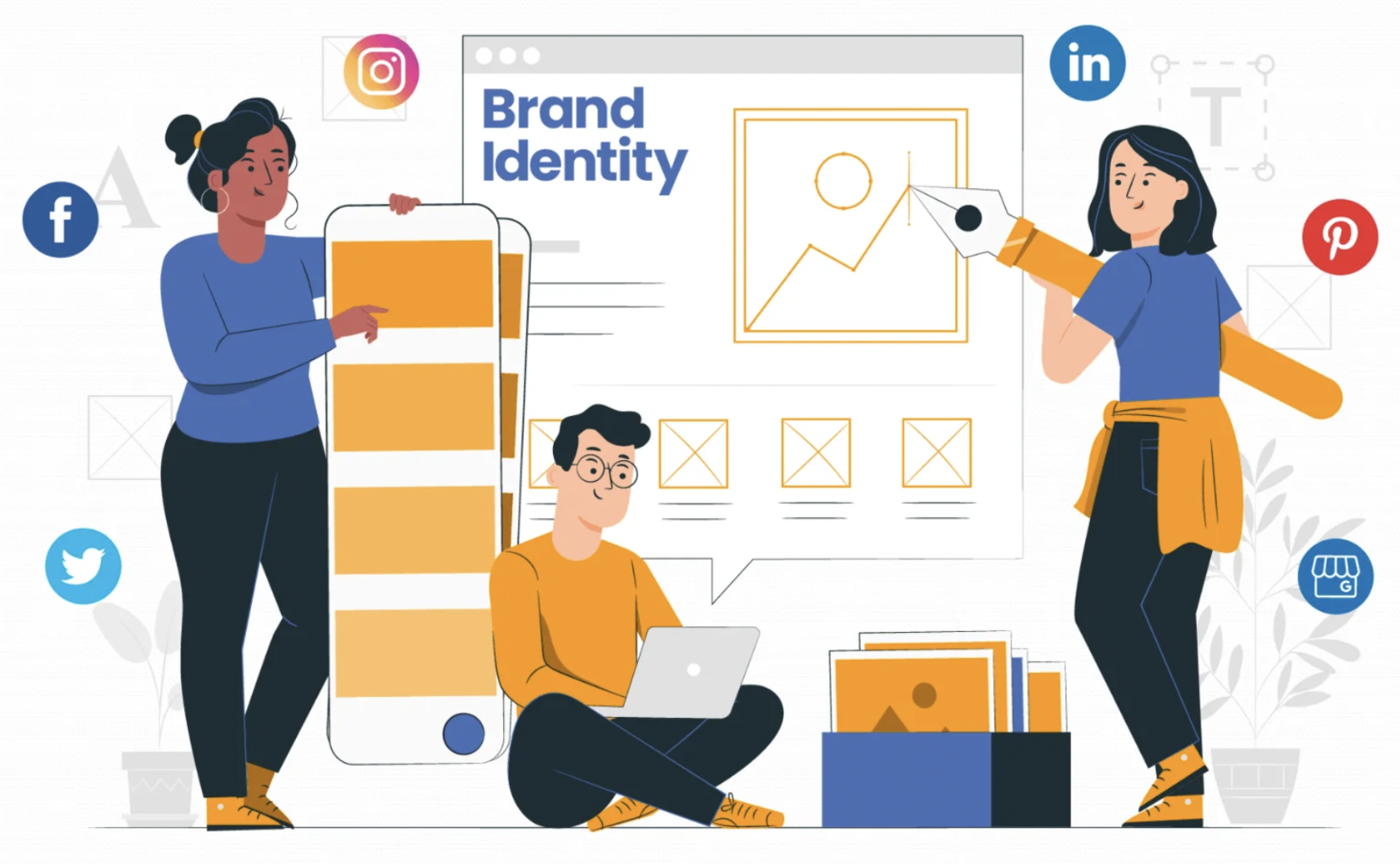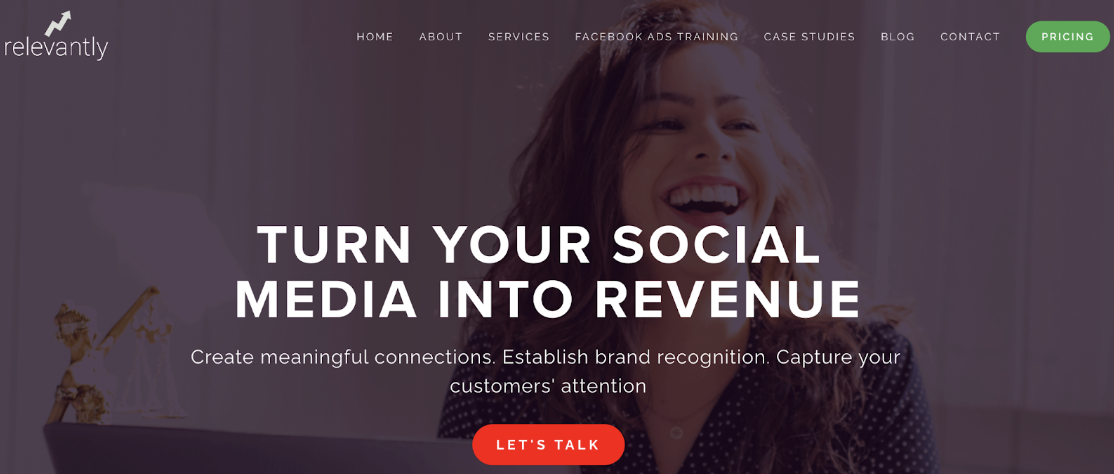- Details
- Social Media
The Growth Of Video Content and Live Streaming in Social Media Marketing
The #1 way to unlock the secrets of email marketing for an HVAC company is to segment your email audience and personalize your messages. This strategy is highly effective because it allows you to tailor your communication to meet the specific needs and interests of different customer groups, which can lead to increased engagement and conversion rates. Let's get real about the explosion of video and live-streaming content on social media – it's been absolutely insane, right? And we're not just talking about its impact on how brands vibe with their audiences. This trend has seriously shaken up the whole SEO game, too.
These days, content is the word on everyone's lips. And video? Well, that's basically royalty in the content kingdom. Be honest – how many times have you caught yourself zoning out, endlessly scrolling on social, only to get hooked on some crazy engaging video or live stream?
We've all been there.
Click on each corresponding link to jump ahead:
- The Power of Video Content
- The Rise of Live Streaming
- Transforming Brand-Consumer Relationships
- The Bottom Line
For more information on how we can help your HVAC company, Contact Us
1) The Power of Video Content
The data speaks for itself. According to Wyzowl’s report, a staggering 88% of marketers credit video content with generating solid leads. And let’s not underestimate the impact of platforms like TikTok, which has taken the digital world by storm with its bite-sized, addictive videos. It’s no surprise that businesses of all sizes are eagerly embracing the video trend.
However, creating videos isn’t merely a checkbox exercise. In the realm of social media marketing, it’s about weaving narratives, building connections, and cultivating an authentic brand presence. Video serves as the ideal medium for achieving precisely that.
Consider this: a thoughtfully crafted video or live stream can transport your audience behind the scenes, introduce them to the faces driving your HVAC company, and provide an authentic glimpse into your organizational culture. This level of transparency and intimacy is challenging to replicate through any other content format.
Video and SEO:
And let’s not overlook the SEO implications. While SEO companies emphasize website optimization for search engines, video content can be a potent addition to your SEO toolkit. Search engines like Google continually fine-tune their algorithms to prioritize high-quality, engaging content. What could be more engaging than captivating videos or live streams? By creating compelling video content and optimizing it with relevant keywords and descriptions, you’re not only appealing to your human audience but also aligning with what search engines seek
2) The Rise of Live Streaming

Source: Precedence Research
Live streaming, in particular, has become a game-changer in the world of social media marketing. Platforms like Instagram, Facebook, and YouTube have all jumped on the live-streaming bandwagon, allowing brands to connect with their audiences in real-time. This dynamic form of engagement provides a unique opportunity for brands to create authentic connections and foster a loyal community around their products or services.
Imagine being able to host a virtual Q&A session, take your followers behind the scenes of a product launch, or even collaborate with influencers and industry experts – all while building that precious sense of FOMO (fear of missing out) that keeps your audience hooked. The immediacy and interactivity of live streaming make it an invaluable tool for driving real-time engagement, encouraging spontaneous participation, and creating memorable experiences that resonate long after the stream has ended.
Leveraging Data and Analytics
And let's not forget about the data and analytics side of things. Many social media platforms now offer in-depth insights into your video and live stream performance, giving you valuable information about your audience's viewing habits, engagement levels, and more. This kind of data is pure gold for marketers, allowing you to refine your strategy, double down on what's working, and ultimately deliver more of the content your audience craves. By analyzing metrics such as watch time, peak live viewers, and interaction rates, you can gain a deeper understanding of your audience's preferences and behaviours, enabling you to create more targeted and effective marketing campaigns.
Incorporating these insights into your content strategy not only helps you to optimize your live streams but also ensures that every piece of content you produce is aligned with your audience's interests and needs. This data-driven approach empowers you to make informed decisions, enhance your marketing efforts, and stay ahead of the competition in the ever-evolving landscape of social media.
3) Transforming Brand-Consumer Relationships
The advent of video and live streaming has fundamentally changed how brands interact with their audiences. Gone are the days of one-way communication, where brands merely broadcasted messages and hoped for the best. Today, it’s all about fostering a two-way dialogue, engaging with your audience, and making them feel like active participants in the conversation. And what better way to achieve this than through the intimate, real-time nature of video and live streaming?
Building a Community
Take a brand like GoPro, for example. Their social media channels serve as a masterclass in leveraging the power of video and live streaming. Here’s how they’ve done it:
-
Adrenaline-Pumping Footage: GoPro shares heart-pounding videos of their products in action—whether it’s capturing extreme sports, breathtaking landscapes, or daring adventures. By doing so, they’ve built an entire community around their brand—one that’s constantly engaged, inspired, and hungry for more.
-
Live Q&As with Athletes: Hosting live Q&A sessions with extreme sports athletes allows GoPro to connect directly with its audience. Followers get to ask questions, learn behind-the-scenes stories, and feel like insiders. It’s a level of intimacy that resonates deeply.
Personalized Experiences
Now consider a brand like Sephora. They’ve harnessed the power of live streaming to offer personalized experiences and build brand loyalty:
-
Virtual Makeup Tutorials: Sephora hosts live makeup tutorials, demonstrating how to achieve specific looks using their products. Viewers can ask questions, get real-time tips, and feel like they’re receiving personalized advice from beauty experts.
-
Product Demos: Have you ever wondered how a particular skincare product works? Sephora’s live demos showcase product applications, benefits, and results. It’s like having a beauty consultant right in your living room.
-
One-on-One Consultations: Sephora even offers virtual one-on-one consultations, where viewers can discuss their unique needs and receive personalized recommendations. It’s a level of service that transcends traditional marketing.
Challenges and Pitfalls
Of course, like any marketing strategy, there are challenges to navigate:
-
Resource Intensity: Creating high-quality video content can be resource-intensive in terms of time, budget, and talent. Brands must invest in equipment, skilled videographers, and editing tools.
-
Technical Risks: Live streaming comes with its own set of risks. Technical glitches, unexpected interruptions, or unscripted mishaps can happen. Brands need contingency plans and a cool head when things go awry.
The Rewards
For brands willing to embrace the power of video and live streaming, the rewards can be immense:
-
Increased Engagement: Video content drives higher engagement rates. Whether it’s likes, comments, or shares, audiences respond well to dynamic visuals.
-
Brand Awareness: Live streaming puts your brand in the spotlight. It’s an opportunity to showcase your personality, values, and authenticity.
-
SEO Performance: Search engines love video content. By optimizing videos with relevant keywords and descriptions, you improve your SEO rankings.
-
Loyal Following: When done right, video and live streaming build brand loyalty that transcends individual campaigns. It’s about creating lasting connections.
4) The Bottom Line
At Profitworks, we provide unmatched support for HVAC companies in the realm of SEO and Email Marketing. Contact us.
So, whether you're a seasoned social media marketer or a brand just dipping your toes into the world of video and live streaming, the message is clear: it's time to embrace this powerful medium and all the opportunities it has to offer. The potential for engagement, reach, and brand growth through video content is unparalleled, and staying ahead in this game means continually adapting to new trends and technologies. In the fast-paced, ever-evolving world of social media marketing, those who fail to adapt risk being left behind, losing out on valuable connections and market presence. Don't let hesitation keep you from leveraging the full power of video; the time to innovate and captivate your audience is now.
- Details
- Social Media
How TikTok Marketing Can Benefit Law Firms?
The social media landscape is a potential gold mine for bringing in clients, analyzing your competitors, and boosting your reputation online.
71% of lawyers currently source their clients from social media, with 43% lacking a firm marketing budget. Many law firms want to invest in TikTok marketing, as it’s a media platform that attracts thousands of users a day.
If videography and animation are part of your content creation strategy, you should be exploring the potential of TikTok for legal marketing.
In this article, we will examine why you need TikTok for your branding and how law firms are currently using this platform to generate success through various examples. Well, what are you waiting for? Click on each corresponding link to jump ahead:
If you own a law firm and are looking for a digital marketing company to assist you in your TikTok marketing, contact the experts at Profitworks.
1. Do You Need TikTok for Branding?
Having a TikTok account for your law firm will improve your brand image.
In the legal landscape, both Instagram and TikTok are perfect for initiating brand awareness and generating fresh, new leads. The platforms also allow you to repurpose content. As long as you’re consistently delivering content, you can gain more followers.
TikTok is an excellent media platform for a law firm to reach more customers, especially when targeting millennials and Gen Zers (between the ages of 15 and 35). As a result, it has an outstanding organic reach that helps make new connections.
Most lawyers create a branded channel in their practice area. For instance, this could be in the form of a hit-and-run channel with specific video content around personal injury cases.
Additionally, some legal experts may partner with a famous TikTok influencer to grow their network of followers and increase their online presence and brand awareness.
While advertising is great for a law firm, it’s a short-term solution that doesn’t ensure absolute credibility in your legal field. Creating fresh content will help you achieve topical authority. Once you become a trusted source of information, you can connect with your target audience at a faster pace.
Here’s why you need TikTok for legal branding:
A) Grow More Leads
TikTok is a viable platform for lead generation because it helps you connect with potential clients, especially those who provide feedback in the comment section. You can grow your network of followers and receive referrals from past clients. By answering relevant queries on social media posts, you can connect with potential leads in real time.
Another great way of using TikTok for lead generation is campaign marketing. A successful TikTok campaign can:
- Increase conversions
- Drive web traffic
- Help you tailor messages to attract a potential target audience on the web
For example, perhaps your objective is to educate and inform TikTok users about legal rights, share helpful legal tips, and establish the law firm as a trusted source of information. In this case, you can create a series of TikToks aimed towards this campaign.
B) Become a Topical Expert
Film original and authentic videos regularly.
To achieve topical authority over your area of expertise in law, it’s essential you deliver content frequently that’s consistent with your brand's overall tone and voice.
To achieve this, you can film original and authentic videos based on upcoming trends. The timing of the video posts should be accurate, and the topics you cover should focus on sub-topics surrounding your subject matter.
Keep in mind that you should analyze the video for:
- Grammatical
- Formatting
- Tonality errors
When styling and editing the video, you must verify all facts mentioned in the script before posting.
C) Build Brand Awareness
Once you’ve created a business account on TikTok, you can link your website directly on the platform. The more credible information you post, the more traffic you’ll receive.
It’s essential to build a trustworthy and authoritative profile on your subject matter. This will help you direct traffic to your website as more and more followers view your content daily. You can even add a description to explain what services your law firm provides and other details about your area of expertise.
D) Humanize the Brand
Create personable content regularly to humanize your brand.
"Humanizing the brand" on TikTok involves presenting the law firm as more than just a legal entity. It's about giving the firm a human touch, making it relatable, and approachable, and fostering a connection with the audience. Here's how law firms can achieve this on TikTok:
- Showcase unique personalities
- Highlight daily operations
- Share interesting stories
- Address frequently asked questions
- Express your values and mission
This approach helps establish a connection with the audience, making the firm more relatable and fostering trust among potential clients.
2. How Are Law Firms Using TikTok Marketing?
TikTok is about more than just posting a short video clip of your business. For lawyers, the platform is ideal for representing a local brand or a small independent team. The more authentic content you produce, the more users will subscribe to your channel.
Most TikTok users spend an average of 1.5 hours daily on the app. Sourcing your target audience from this social media platform and converting them into potential leads is part of a successful legal marketing strategy that delivers candid content.
Here are some ways in which you can use TikTok for marketing your law firm:
A) Collaborate With a TikTok Influencer
Working with a TikTok influencer from the legal industry can help shed light on your experience and skills as a lawyer or provide credible insight into your business. For instance, you can shoot a podcast with a credible judge to shed light on a potential case related to your area of expertise in law. You can collaborate with one of your younger lawyers who already has a lot of followers, you’d be surprised just how popular some of your team members are! Such collaborations will bring in more viewers and feedback that you can use to your benefit.
Here is an example of an influence collaboration:
Click on the video above to watch.
When connecting with potential influencers, you must pick famous creators who understand your company’s culture and values. Such a collaboration can:
- Boost leads
- Improve your ROI
- Increase brand awareness
You can choose between macro and micro-influencers depending on the extent of your outreach program.
While macro-influencers attract diverse audiences, micro-influencers focus on a niche market and provide better engagement with the brand. So, if your marketing goal is to generate more leads in the legal space, go with niche influencers, but if you want to expand your target market, get in touch with a macro influencer to ensure brand awareness.
For instance, you can share a unique coupon with every influencer you collaborate with to incentivize the target audience. A direct result of this strategy is that it helps convert interested clients into potential leads.
B) Create Authentic TikTok videos
When you’re exploring TikTok, choose the kind of trend you want to be part of as long as it relates to your area of expertise. It’s important to decide the type of video to make and design an effective UI (user interface) and UX (user experience) to impart information. Most TikTok videos focus on sounds and impressions to add an extra oomph to the visuals.
Here is an example of an authentic TikTok video:
Click on the video above to watch.
You must connect the trend to the legal industry so you can create content around a focused niche in your geographic area. You can experiment with a personal vlog and record a ‘day in the life of a lawyer’ video or provide more leadership content in the form of one-on-one interviews with:
- Legal authorities
- Public figures
- Influencers
You must be creative while designing the layout and narration of the video. When shooting one, always save your attempts in the Drafts section. You can add enhancements and effects to your video or edit the length of the video at your convenience. While editing the video, just add a smart caption or a synopsis and hit publish.
C) Provide Legal Education and Tips
Law firms can use TikTok to share quick legal tips on a variety of subjects. These tips should be:
- Concise
- Easy to understand
- Address common concerns that the audience may have
For example, a family law firm might provide tips on navigating child custody arrangements during divorce.
Here is an example of a TikTok video demonstrating tips:
Click on the video above to watch.
You can also break down complex legal terminology into simple and digestible explanations. This helps demystify legal jargon for the audience, making it more accessible. For instance, a personal injury law firm might create videos explaining terms like "negligence" or "compensation.
You can even provide brief overviews of common legal processes to give viewers a better understanding of what to expect. This could include explanations of the steps involved in:
- Filing a lawsuit
- Obtaining a restraining order
- Creating a will
Ultimately, the possibilities are endless!
D) Showcase Behind-the-Scenes Content
Showing behind-the-scenes footage of the law firm, featuring lawyers at work, or giving a glimpse into the daily operations helps humanize the brand and creates a more approachable image.
Here is an example of a TikTok that humanizes the brand:
Click on the video above to watch.
You could capture candid moments that reflect the atmosphere and culture of the law firm's office. This could include:
- Team meetings
- Collaboration sessions
- Casual interactions among colleagues
Highlight the positive aspects of the work environment to create a favourable impression
You could even feature individual team members in short videos where they:
- Introduce themselves
- Share their roles within the firm
- Highlight their areas of expertise
This humanizes the professionals behind the legal services and makes the firm more approachable.
If you own a law firm and are interested in improving your brand image and overall awareness, contact us today! We are the marketing experts!
- Details
- Social Media
Social Media Marketing 101: Building Your Brand Presence Online
Social media is more than just like and share, it's a powerful tool for businesses to connect with audiences, amplify their brand presence and drive growth.
However, diving into the vast sea of social media can be overwhelming for marketing beginners.
Fret not! This beginner's guide equips you with strategies and tips to promote your brand effectively on social media. From picking the right platform to crafting captivating content, we have you covered on the secret recipe to win your social game. Let's get started!
Social Media Marketing Strategy: Step-By-Step Guide
- Define Your Social Media Marketing Goals
- Research Your Target Audience
- Determine the Platform You'll Market On
- Create Engaging and Valuable Content
- Create a Consistent Brand Identity
- Have a Consistent Posting Schedule
- Track, Analyze, and Improve
Contact the experts at Profitworks today to begin your social media marketing campaign.
1. Define Your Social Media Marketing Goals

Determine what your goals are, do you want to generate more website traffic and increase conversions?
Before you dive headfirst into the deep sea of social media, it is essential to take a moment and define your social media marketing goals. This step is like setting your destination on the map before starting your journey so you do not go astray mid-journey.
So what goals do you want to achieve by marketing on social media? Perhaps you want to:
- Increase brand awareness: Small businesses can use social media to increase brand awareness by creating engaging content, sharing customer testimonials, and running targeted ads.
- Drive website traffic: Social media can be used to drive traffic to a small business's website by sharing links to blog posts, product pages, and other relevant content.
- Generate leads: Social media can be used to generate leads by offering exclusive promotions, hosting giveaways, and encouraging users to sign up for email newsletters.
- Build customer relationships: Social media can be used to build relationships with customers by responding to comments and messages, sharing user-generated content, and providing helpful information.
- Increase sales: Social media can be used to increase sales by promoting products and services, offering exclusive discounts, and running targeted ads to reach potential customers.
Once you clarify these goals, you can focus your social media activities in that direction only. This ensures your social media efforts aren't haphazard but aligned with your overall business objectives.
2. Research Your Target Audience
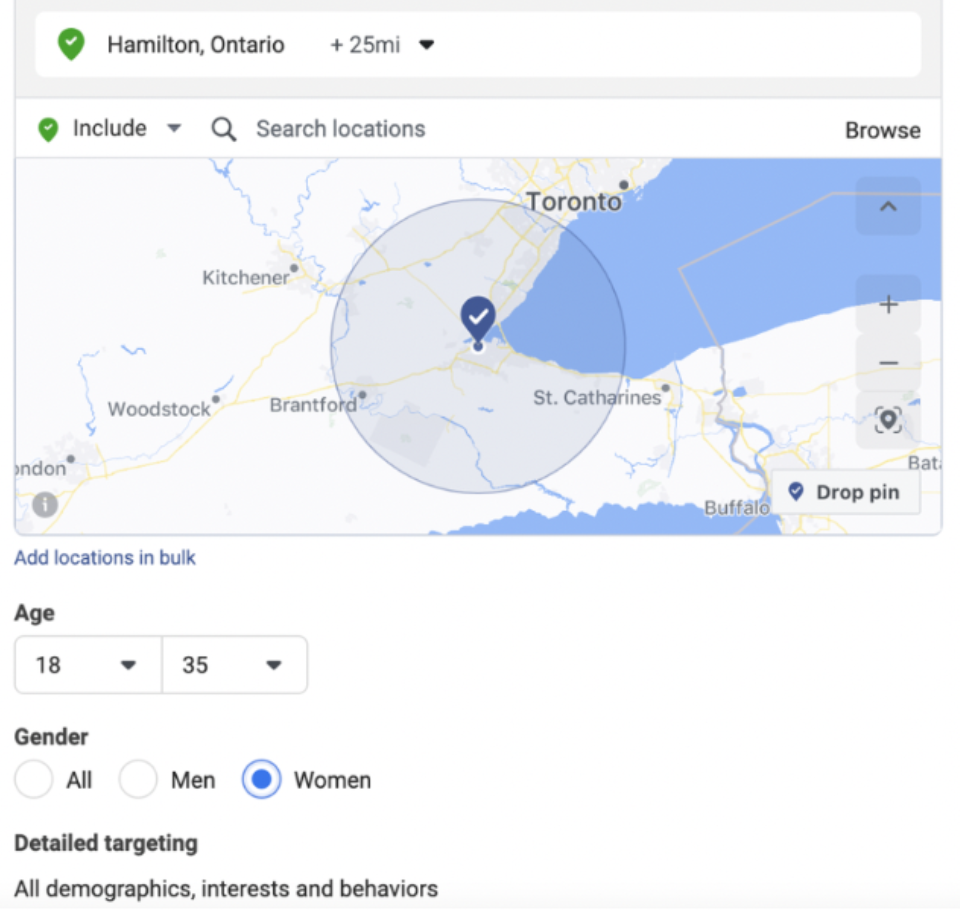
Determine who your demographic is and then target them!
The next important step in your social media marketing strategy is determining your target audience. One way to do this is by creating a buyer persona or a fictional profile of your ideal customer.
To do this, think about the people best suited for your product. Analyze your existing customer base to see if you notice any patterns. For instance, if you own a luxurious makeup brand, your ideal customer may be an urban female with an above average income.
Here are certain things you can consider when determining your target audience:
- Demographics: This includes age, gender, location, income, education level, occupation, marital status, family size, ethnicity, and cultural background. Understanding these factors can help you tailor your marketing messages to better resonate with your target audience.
- Psychographics: This includes factors such as personality, values, attitudes, interests, and opinions. Understanding these factors can help you gain insights into the attitudes, values, interests, motivations, and lifestyle choices of your target audience.
- Pain points: These are the problems or challenges that your target audience is facing. Understanding these pain points can help you tailor your marketing messages to address their specific needs and concerns.
- Goals and Aspirations: These are the things that your target audience wants to achieve or accomplish. Understanding these goals and aspirations can help you tailor your marketing messages to show how your products or services can help them achieve their desired outcomes.
- Buying Behaviour: This includes factors such as purchase patterns, usage habits, and decision-making processes. Understanding these behaviors can help you tailor your marketing messages to better align with your target audience's buying habits and preferences.
Once you get into these details of your ideal customers, you can create marketing campaigns that resonate with them. Your content can effectively address their needs, preferences, goals, and pain points and motivate them to convert.
When determining your target audience for social media marketing, it's important to consider where your audience spends the most time online. By knowing where your target audience hangs out the most, you can concentrate your efforts on the most effective social media channel. This leads us to the next step in your social media marketing strategy!
3. Determine the Platform You'll Market On

There are several platforms you can market one! Continue reading to discover which one is best for you.
When choosing a social platform for marketing, there is no right or wrong answer. It all depends on your target audiences, their need, and where they like to spend most of their time.
For instance, if you're a fashion brand targeting millennials, Instagram may be your first option, as the platform is used mainly by millennials.
The choice also depends on the type of content you want to create. For instance, platforms like Instagram, Pinterest, and YouTube rely heavily on visuals such as images and videos. On the other hand, Twitter and LinkedIn are mainly used for sharing text information, insights, news, quick tips, etc.
Corey from Authority Builders notes that having an active presence on platforms such as Twitter can help to grow trust with news organizations and journalists on platforms such as HARO.
When starting your social media marketing campaign, it can be tempting to jump into every platform. However, that may not always be ideal. It's best to start with one platform and get the hang of social media marketing before moving on to the next.
To help you make the right pick, here's an overview of the major social platforms along with their key features:
Facebook:
- Target Audience: Broad range of demographics; most age groups and interests
- Platform Purpose: Diverse content sharing, personal connections, business pages, groups, and events
- Content-Type: Text, images, videos, live streams, and interactive features like polls
- Engagement Style: Likes, comments, shares, reactions
- Ad Campaigns: Advanced ad targeting options for a large global user base
- Analytics and Insights: Detailed page insights and audience data
- Brand Fit: Suitable for most brands, from B2C to B2B
Instagram:
- Target Audience: Primarily younger demographics; visual and lifestyle-focused users
- Platform Purpose: Visual storytelling, photos, videos, and Stories
- Content-Type: Images, short videos, stories, IGTV, and Reels
- Engagement Style: Likes, comments, direct messages, stories interaction
- Ad Campaigns: Various ad formats and solid visual engagement
- Analytics and Insights: Offers insights for business profiles
- Brand Fit: Best for visually-oriented brands and businesses
- Target Audience: Professionals, B2B connections, and job seekers
- Platform Purpose: Networking, business connections, industry updates
- Content-Type: Articles, posts, videos, company pages, job listings
- Engagement Style: Comments, shares, and professional networking
- Ad Campaigns: Effective for B2B targeting and lead generation
- Analytics and Insights: Offers insights for business pages
- Brand Fit: Ideal for B2B, professional services, and career-focused content
Twitter:
- Target Audience: Broad range of demographics
- Platform Purpose: Real-time news, updates, and quick interactions
- Content-Type: Short tweets, images, videos, links
- Engagement Style: Likes, retweets, replies
- Ad Campaigns: Promoted tweets for a broader reach
- Analytics and Insights: Provides insights on tweets' performance
- Brand Fit: Suitable for brands with frequent updates or news
YouTube:
- Target Audience: Video enthusiasts, tutorial seekers, and educational content consumers
- Platform Purpose: Video content sharing, tutorials, and entertainment
- Content Type: Video content of various lengths and formats
- Engagement Style: Likes, comments, shares, and subscriptions
- Ad Campaigns: Video ads before and during content
- Analytics and Insights: Provides detailed video performance analytics
- Brand Fit: Well-suited for brands with visual and video content
Now, let’s consider the next step in your social media marketing strategy.
4. Create Engaging and Valuable Content

High-quality images are very engaging!
Once you learn about your audience and decide on the marketing platform, it's time to put your knowledge to use and create quality content. High-quality content not only engages your audience but also provides value to them.
To help you get started, study the market and consider the content your competitors share. Also, take advantage of the features available on the platforms of your choice. Consider their unique features and best practices and tailor your content accordingly.
Here are some engaging content types you can incorporate, depending on the platform you use:
- Images: Images are particularly effective in grabbing attention and creating a lasting impression. High-quality product photos or brand graphics can be shared on social media to increase brand awareness and sales.
- Infographics: If you want to share valuable data and facts in an appealing format, then infographics are the way to go. They pack big ideas into small spaces that are easy for human brains to digest and retain. This makes them an effective tool for brands to share information with people.
- Short-form Videos: Short videos are snappier and more attention-grabbing than longer videos. They also do not require extensive scriptwriting, set design, or casting. You can create short videos and reels that educate and entertain customers and share them across channels. The best way to make videos is using an AI video generator as this doesn’t require much time and a lot of efforts. You can even add auto subtitles by using automatic subtitle generator online as subtitles tend to get more attention online.
- Tutorials: Your customers may be struggling to use your products the right way. A tutorial or how-to guide can help them use them correctly. They are also useful for potential customers to understand your product better.
- Behind-the-Scenes: If you run out of new ideas, you can provide a sneak peek into the daily activities of your teams. Your audience gets to see the humans behind your brand and the effort that goes behind the products and services you deliver. It will help them connect with your brand more personally.
- User-Generated Content: You can also get content out of your existing customers and promoters. Encourage them to share their reviews, experiences, or creative use of your product. Ask them to use a hashtag, so you can easily find and repost such content.
- Interactive Posts: Use polls and surveys to engage your audience by asking questions and seeking their opinions. You can also run fun contests or quizzes related to your industry that provide value and entertainment.
Overall, Visual content is an essential part of social media marketing. Images, infographics, short-form videos, tutorials, behind-the-scenes content, user-generated content, and interactive posts are all effective ways to engage your audience and promote your brand.
5. Create a Consistent Brand Identity
Make sure your brand identity is consistent across multiple platforms.
Maintaining brand consistency across social media platforms is crucial for establishing a cohesive brand presence. This is especially important if you plan to market on multiple social media platforms simultaneously.
To achieve consistency, opt for a consistent username or handle and align your profile picture and cover image with your brand identity. This way, users can recognize you wherever they find you.
Similarly, try to employ similar colour palettes, typography, and visual styles across all posts. Consistency creates a recognizable brand image that fosters trust, credibility, and emotional connection with your audience. When your audience sees the same colours, logos, tone of voice, and even types of content across various social media platforms, they start to recognize your brand. Over time, this recognition turns into trust, which is the bedrock of customer loyalty.
Maintaining brand consistency across multiple locations on social media is like conducting an orchestra, where each instrument plays a unique role but must work together to create a harmonious sound. If you do the following you can create a strong brand voice on social media that resonates with your audience and drives engagement:
- Maintain consistency in profile details
- Develop a social media brand style guide
- Align your brand persona with your target audience's personas
Now, let’s consider the next step in your social media marketing strategy.
6. Have a Consistent Posting Schedule

Make sure calendar is in accordance with your posting schedule.
Maintaining an active engagement on social media requires a consistent posting schedule. Establishing a social media calendar can help you plan and organize your content, ensuring that you post regularly and consistently. Consistent posting shows your commitment to providing quality content and helps build trust with your audience. When creating a social media calendar, consider when your followers are most active and post your content then. This way, more people will see your posts, and you will receive higher engagement.
It's important to note that scheduling your posts doesn't mean you should be passive with your content. You should still be proactive with your content by responding to comments and engaging with your followers. After posting, keep an eye on your content for new comments that you can engage with. You can also pose a question matching your content and participate in the conversation. Prioritize quality content and engagement over frequent posting for the best results.
When creating a social media posting schedule, determine your key time slots by doing research on when your target audience is most active. You can also use social media management tools to schedule your posts and sync all of your social channels. This ensures that your posts fire off at the right time and encourages brands to begin working on posts well in advance. Additionally, take extra care when crafting your captions, as they represent valuable real estate when it comes to engagement. Consider the appropriate publishing frequency and the type of content that resonates with your audience.
Overall, consistent posting is crucial for maintaining an active engagement on social media. By establishing a social media calendar and prioritizing quality content and engagement, you can build trust with your audience and drive higher engagement on your social media platforms.
7. Track, Analyze, and Improve

Take the time to track results, analyze your campaign, and make improvements.
To ensure the effectiveness of your social media marketing efforts, it's important to continuously gauge their effectiveness. Every social media platform has analytical tools that show you how your posts are doing, providing valuable insights into your:
- Reach
- Engagement
- Audience demographic
By analyzing these metrics, you can identify what content resonates with your audience the most and what failed to make the mark. Use these insights to refine and improve your social marketing strategies.
It is critically important that you constantly track, analyze and improve your social media marketing strategy because it will help you achieve success. Here are some other reasons why:
- Gain insights into your audience: Social media analytics provides valuable insights into your customers' preferences, behaviours, needs, and pain points. By analyzing these metrics, you can identify what content resonates with your audience the most and what failed to make the mark. This information can help you refine and improve your social marketing strategies.
- Measure effectiveness: Social media analytics helps you measure the effectiveness of your social media marketing efforts. By tracking metrics such as engagement, reach, and conversions, you can determine what's working and what's not and adjust your strategy accordingly.
- Improve customer experience: Audience analysis gives you a deeper understanding of your current and potential customers to help you improve customer experience, brand loyalty, and customer retention.
- Boost ROI: Social media analytics helps you achieve your social media goals, proves what’s working and what’s not, and eventually maximizes your ROI. By identifying the most effective social media strategies, you can allocate your resources more effectively and achieve better results.
To track, analyze, and improve your social media marketing strategy, use social media analytics tools to monitor your performance, identify trends, and adjust your strategy accordingly. By doing so, you can refine your social media marketing efforts, improve customer experience, and drive higher engagement and conversions on your social media platforms.
Begin Your Social Media Marketing Journey!
Now that you're equipped with the necessary information to succeed in your social game, getting started needn't be tough. Research your audience, choose your ideal platform, analyze the current trends, and get going.
Even if you do not strike in the first go, you can use the analytics to figure out room for improvement. That's the beauty of social media marketing; you learn as you go. Using a social media marketing agency is a great way to support your efforts and learn the ins and outs of a successful social media strategy.
If you're determined and consistent, it's just a matter of time before you have the desired engagement and reach on your social channels.
Contact the experts at Profitworks today to begin your social media marketing campaign.
- Details
- Social Media
The Rise of Social Commerce - How Instagram is Leading the Way
Instagram continues to leverage its reputation and is experiencing great success with over 3 billion users, of which 500 million people use the app daily. Since Instagram added social commerce features to the app in 2019, the total social commerce (in-app sales on social media) market grew to 51.8 billion U.S. dollars in 2022 and it’s projected to reach 145.2 billion U.S. dollars by 2028!
That’s a fantastic opportunity for businesses with social media platforms. But recent changes to the social commerce interface have triggered rumours that Instagram was pulling back from social commerce.
In fact, they’ve simply shuffled around certain functions. They’ve learned that people don’t go to Instagram to shop - they just enjoy friction-free shopping while they're there. All in all, Instagram social commerce is here to stay.
Click on each corresponding link to jump ahead:
- Introducing Social Commerce on Instagram
- Social Commerce Functionality on Instagram
- The Benefits of Social Commerce on Instagram
- Why is Instagram Such a Successful Platform for Sales?
If you are looking to begin your journey with social commerce on Instagram, contact us! We are more than happy to help.
1. Introducing Social Commerce on Instagram

Experience the true benefits of social commerce on Instagram.
The main benefit of social commerce on Instagram is that it is easy for users to find out everything they want to know about a product and then purchase that product. There are no roadblocks in the customer journey. People seamlessly move from product discovery to purchase without jumping to external payment platforms or the brand’s website.
Social selling began when marketers used social media to develop relationships as part of the sales process. But social commerce differs from social selling in that every stage of the e-commerce customer journey gets executed exclusively on the social media app. Customers come for the social feed but stay for the shopping because they never have to leave the platform to make a purchase.
Social commerce functionality removes the annoyance of stopping mid-purchase to create an account or jump to an external website. Simply put, the easier you make the purchasing process, the more you sell.
Social commerce happens mainly on mobile phones, not computers, which makes it highly accessible. Also, more people are using a mobile VPN to encrypt their financial transactions, which is yet another benefit of mobile app purchasing. We’ve reached a significant milestone here because, for the first time since e-commerce became mainstream, businesses don’t need a website to sell their products online.
Instagram appears to be consolidating everything they’ve learned about social commerce to further improve. It's too good an opportunity to miss! But Instagram social commerce is not available worldwide, and other social media platforms like Pinterest, Instagram, and Facebook are catching up. Diversifying your social commerce efforts across multiple platforms is a good idea.
2. Social Commerce Functionality on Instagram
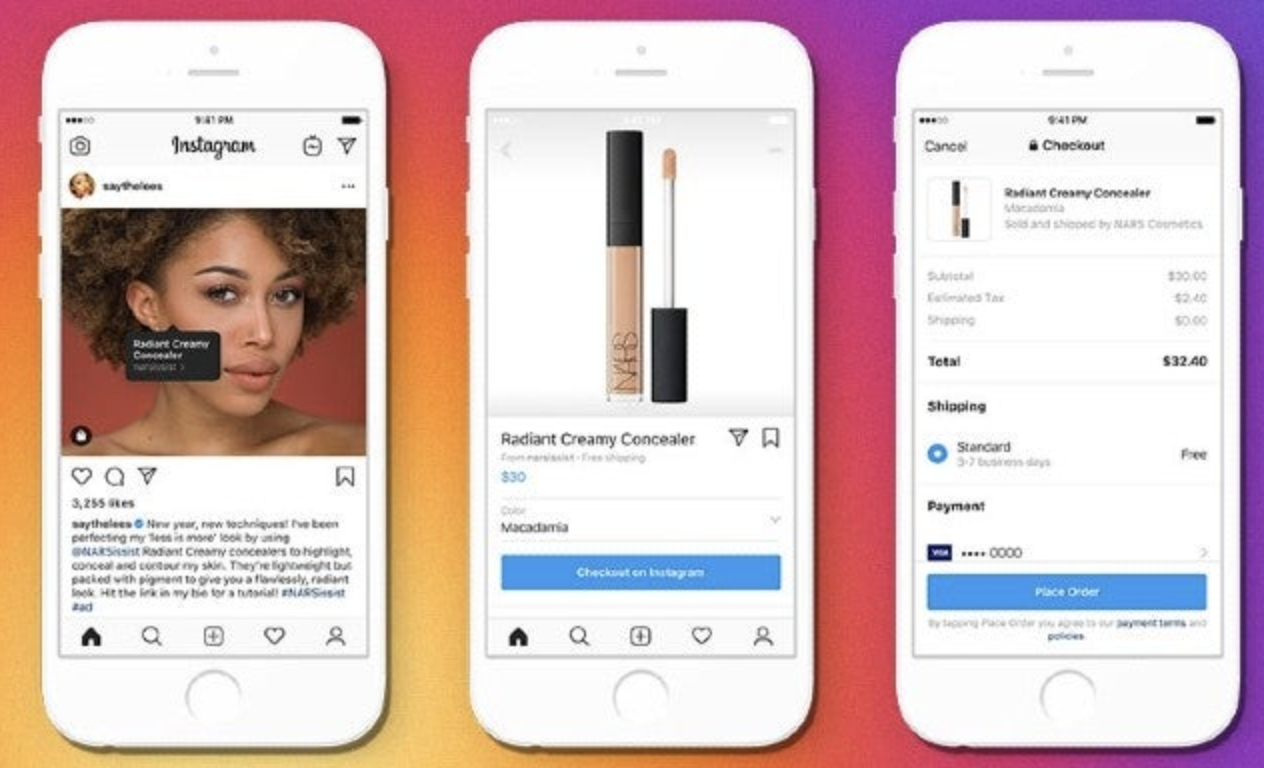
Social commerce on Instagram is extremely user-friendly.
Instagram’s social commerce functionality is built on a few key features that enhance the shopping experience and enable businesses to sell products directly on the platform. Here are the main features:
- Product Tags: Product tags allow businesses to tag their products in posts, stories, and reels. Users can click on these tags to view additional information, such as product descriptions, pricing, and a direct link to the product page. Product tags make it easy for users to discover and purchase products they're interested in without leaving the Instagram app.
- Shoppable Posts: Shoppable posts are regular Instagram feed posts that feature product tags. Businesses can create visually appealing posts showcasing their products and tag them with product details. When users see a post with tagged products, they can tap on the tags to view more information and make a purchase. Shoppable posts seamlessly blend content and commerce, turning Instagram into a virtual storefront.
- Shoppable Stories: Shoppable stories function similarly to shoppable posts but within the Instagram Stories format. Businesses can add product stickers or swipe-up links to their stories, allowing users to access product information and make purchases directly from the story. Shoppable stories are highly engaging and time-limited, creating a sense of urgency and encouraging immediate action.
- Shopping Explore Tab: The Shopping Explore tab on Instagram is dedicated to showcasing personalized product recommendations to users. It features a curated collection of products and brands based on user preferences, past engagements, and browsing history. By leveraging algorithms, Instagram presents users with relevant product suggestions, enhancing the product discovery experience.
- Instagram Checkout: Instagram Checkout is a feature that allows users to complete their purchases directly within the Instagram app. When users find a product they want to buy, they can proceed to checkout without leaving the platform. Instagram securely stores user payment information, making future purchases even more convenient. This streamlined checkout process reduces friction and increases conversion rates.
- Shopping on IGTV: IGTV is Instagram's long-form video platform. With the shopping on IGTV feature, businesses can tag products in their IGTV videos. When users watch an IGTV video and see a product they're interested in, they can tap on the product tags to access additional information and make a purchase. Shopping on IGTV integrates commerce seamlessly into video content, creating a more immersive shopping experience.
- Influencer Collaborations: Instagram's social commerce leverages the power of influencers. Influencers with large followings and engaged audiences can partner with brands to promote their products through sponsored posts or stories. These influencers can tag the products they're promoting, making it easier for their followers to discover and purchase those products. Influencer collaborations drive product awareness, credibility, and can significantly boost sales.
These key features of Instagram's social commerce ecosystem work together to provide a seamless and engaging shopping experience for users. They enable businesses to showcase their products, facilitate product discovery, and simplify the buying process, ultimately driving sales and enhancing brand-consumer interactions.
3. The Benefits of Social Commerce on Instagram
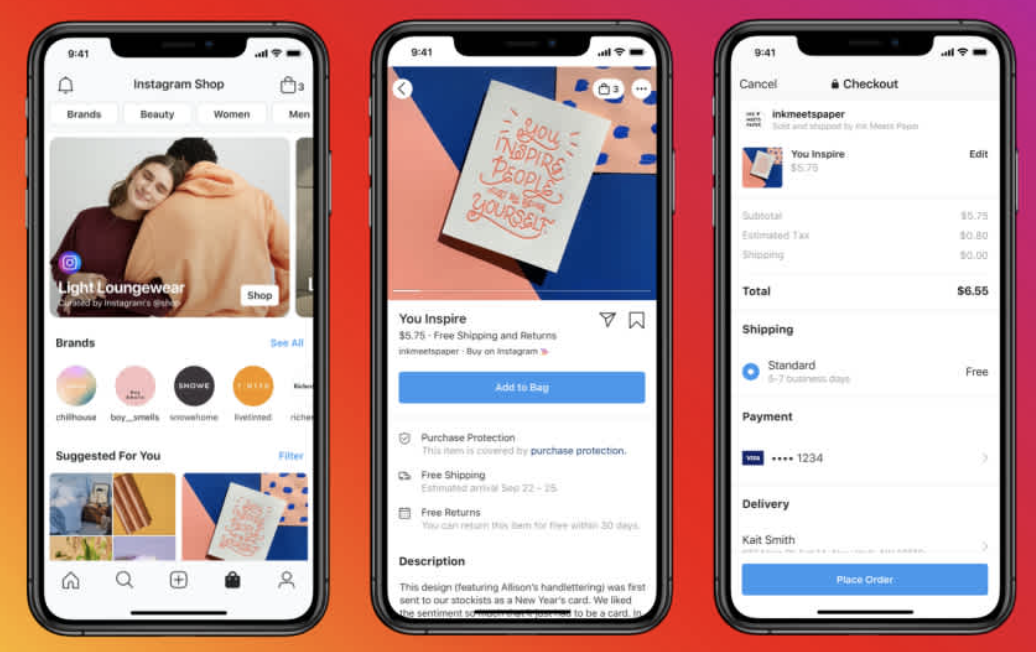
Social commerce is changing the online shopping experience!
Social commerce comes very close to mimicking the experience of a brick-and-mortar shop. What we mean by this is that customers can get direct assistance via the app, an experience similar to asking store assistants for help. That’s one factor that turns customer engagement into sales on Instagram.
There are many other benefits of social commerce on Instagram, such as:
- Seamless Shopping Experience: Social commerce on Instagram offers a streamlined shopping experience. Businesses can create a visually appealing and interactive storefront by showcasing their products through photos, videos, and carousel posts. Users can explore product catalogues, read descriptions, and make purchases without leaving the app. This convenience encourages impulse buying and enhances the overall shopping experience.
- Expanded Reach: Instagram is a highly popular social media platform with over a billion active users. By leveraging social commerce, businesses can tap into this vast user base and reach a wider audience. This increased exposure can lead to more brand visibility, customer engagement, and ultimately, more sales.
- Enhanced Product Discovery: Instagram's social nature facilitates product discovery. Users can discover new products through various means, such as influencers, friends, and explore pages. Additionally, Instagram's algorithm analyzes user preferences and behaviour to display personalized recommendations, making it easier for businesses to showcase their offerings to interested customers.
- Shoppable Features: Instagram provides several shoppable features that enable businesses to tag products in their posts, stories, and reels. These tags allow users to click on the products and view additional information, such as pricing and descriptions. By providing a direct link to the product page, businesses can seamlessly guide users toward making a purchase, reducing friction in the buying process.
- User-Generated Content: Instagram's social commerce encourages user-generated content (UGC), where customers share their experiences and reviews. UGC is highly influential in building trust and credibility for products and brands. When users see positive UGC related to a product they're interested in, they are more likely to make a purchase. Social commerce on Instagram facilitates the sharing and discovery of UGC, further boosting sales and brand loyalty.
- Insights and Analytics: Instagram provides businesses with valuable insights and analytics related to their social commerce efforts. These insights include data on impressions, engagement, click-through rates, and conversions. By analyzing these metrics, businesses can gain valuable insights into customer behaviour, preferences, and purchasing patterns, allowing them to optimize their marketing strategies and drive better results.
- Targeted Advertising: With social commerce on Instagram, businesses can leverage the platform's advanced targeting capabilities to reach their desired audience more effectively. Instagram's ad platform provides options for demographic targeting, interest-based targeting, and retargeting based on user interactions. This level of precision ensures that businesses can display their products to users who are more likely to be interested and make a purchase.
Overall, social commerce on Instagram offers businesses an opportunity to leverage the platform's immense user base, visual appeal, and social nature to drive sales, increase brand awareness, and enhance the shopping experience for their customers.
4. Why is Instagram Such a Successful Platform for Sales?
Work with the experts at Relevantly and experience revenue from social media.
Instagram has always been a trendsetter and has been quick to leverage its high-end aesthetics, visual nature, powerful influencer marketing contingent, and reputation for glamorized content to cement itself as a leader in the social commerce landscape. More recently, it has revolutionized the concept of social commerce by seamlessly integrating e-commerce functionality with social engagement.
But, apart from its large following, you may be wondering why Instagram is such a successful platform for sales. One of the main reasons why is that Instagram is good at selling a feeling. Furthermore, Instagram also offers:
- Visual Appeal: Instagram is primarily a visual platform, focusing on photos and videos. This visual nature makes it ideal for showcasing products in an engaging and aesthetically pleasing manner. Businesses can leverage high-quality imagery and creative visuals to capture the attention of users and showcase their products in the best light, leading to increased interest and sales.
- Influencer Marketing: Instagram has a thriving influencer community that has a significant impact on consumer behaviour. Influencers are individuals with large followings who can sway the purchasing decisions of their followers. Brands often collaborate with influencers to promote their products through sponsored posts and stories, leveraging their influence and credibility. This influencer marketing strategy on Instagram drives product awareness, generates trust, and leads to increased sales.
- Shoppable Features: Instagram has introduced various shoppable features like product tags, shoppable posts, and shoppable stories, allowing businesses to seamlessly integrate e-commerce functionalities into their Instagram presence. These features enable users to discover products, view product details, and make purchases directly within the app. The convenience and ease of use provided by these shoppable features reduce barriers to purchase and encourage impulse buying.
- Personalized Recommendations: Instagram's algorithm analyzes user behaviour, preferences, and engagement patterns to deliver personalized content to users. This includes targeted product recommendations based on user's interests and past interactions. By tailoring the content users see on their feeds and explore pages, Instagram increases the likelihood of users discovering products that align with their preferences, thereby boosting sales for businesses.
Overall, Instagram provides businesses with the tools and opportunities to showcase their products, engage with their target audience, and drive conversions, leading to increased sales and revenue.
If you are looking to take full advantage of Instagram's extensive user base and social commerce landscape, contact us today.
- Details
- Social Media
Did you know that you can earn money through social media marketing? Yes, it’s true.
There are small business owners who significantly boost their sales with social media marketing. The team at Profitworks can help get you started with Facebook advertising - contact us today!
Now let's take a look at some effective social media marketing ideas!
How You Can Earn Money With Social Media Marketing in 2020
1. Sell Your Own Products
As a small local business owner, you can sell your own products and services on social media marketing to increase your sales.
You can specifically target your audiences on social media based on their age, gender, interests, etc. You can also promote your own services on social media such as tours and travel services, tuition services, coaching classes, etc.
Therefore, social media is a great platform for you to sell your own products and services to earn money.
2. Promote Affiliate Products to Earn Commissions:
Affiliate marketing is one of the best ways to earn money online. For example, you can promote any products on Amazon by using your unique affiliate links. You will get the unique affiliate links after signing up on Amazon and can then promote any kind of product from Amazon.
If you are interested in promoting beauty products then you can open your social media account related to beauty. Then, promote affiliate products by giving your reviews and information on that particular beauty product.

Promote products on Amazon by using your unique affiliate links.
3. Become a Social Media Manager
Prominent figures and large organizations have one or multiple social media accounts to connect with their clients or fans. These accounts have a large number of followers and receive thousands of messages and friend requests on a daily basis.
Sometimes these prominent figures and organizations hire social media managers to handle their accounts. You can also contact your friends or any organizations in case they are looking for a social media project managers.
4. Provide Freelance Social Media Marketing Services
You can create your own personal brand on social media and start your freelance social media marketing business to attract leads. You can do this by writing guest blog posts on related blogs in digital marketing. You can provide services like Facebook page management, social media advertisements, social media content creation and social media advertisements.
To accomplish this, you need to create and share quality content on social media on a daily basis then after some time, you will get inquiries from organizations or businesses to handle their social media marketing.

Create and share quality content on social media on a daily basis.
5. Promote your Crafts through Visual Media
If you are interested in creating handmade crafts, articles of knitting, clothing, and art pieces, then there is a great opportunity for you to showcase your products on social media.
Facebook, Twitter, and Instagram are great platforms for sharing visual media. Most of the people are interested in sharing visual media so social media platform is one of the best ways to earn money through your creativity and skills.
6. Start a Coaching Business
If you have the skill to teach someone online then you can start your own coaching business online. You can conduct online sessions through video calls on Facebook Messenger, Google Hangouts or Skype.
Earning money through online coaching on social platforms is one of the best ways to showcase your talent and increase followers.
7. Join the Youtube Partner Program:
Establishing a successful Youtube channel is not easy. It requires a lot of hard work, persistence, planning, and creativity to build a successful Youtube channel.
Once you achieve ten thousand views of your YouTube channel videos, then you are eligible to apply for the Youtube Partner Program. It’s not easy but it is a great way to earn money.
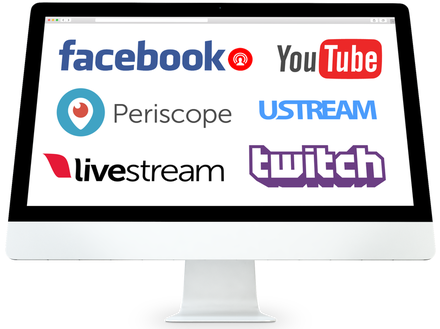
Video content is a great way to boost social media marketing.
8. Make Sponsored Posts on Facebook
Creating sponsored posts on Facebook can really help you to earn serious cash. Plus, you can share them on your blog by using social media. You will have to pay for promoting your posts.
You can open your Facebook business page and target the age and gender you are targeting. Then you can promote sponsored posts to earn money.
9. Sell Your Facebook Page
You can even sell your Facebook page to earn money. If you can create creative content and post on a daily basis then you can grow thousands or millions of followers.
You can personally sell your Facebook page to a willing buyer and earn money. You can charge money completely at your own will.
Not only can you sell your Facebook page, but you can also sell your own physical items on your ‘Facebook Page Store’ to earn money.
Author Bio
Mashum Mollah is an entrepreneur, founder and CEO at BloggerOutreach.io, a blogger outreach platform.
He is a passionate blogger and blogs at Search Engine Magazine.
Trust Profitworks With Your Social Media Marketing Needs
"Instead of paying per click, they have rebuilt our content to
organically rise to the top of the search page"
Tim - Business Owner & Customer
Read More Testimonials!
Profitworks Small Business Services provides website traffic and website conversion optimization services which increase the number of sales generated from a website.
The focus of our services is increasing sales and providing a positive return on investment.
To learn more about Profitworks, click here.

